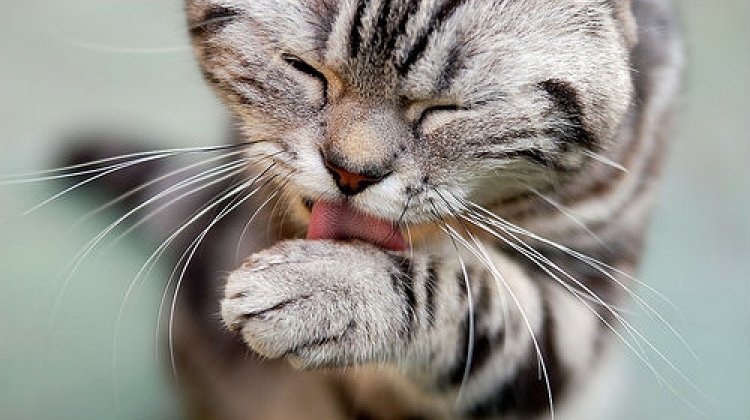Roberta
Thu 1 February 2018
0
Two days ago I brought my dog to "take a bath" and I had the chance to talk to a good groomer. She shared some rather incredible experiences with cat owners, and she asked me to write something to clear things up; some basic information we ought to know when we decide to take the cat to the groomer: so, here I am to clarify!
Can we bath the cat? If so, how often should we do it?
The common conception is that cats hate water, actually a lot of cats aren't bothered by it, some even enjoy the occasional dive in a small lake or puddle. Be careful not to misunderstand the cat’s pleasure to play with water with the necessity to bath! Cats are very clean animals, whoever has had one knows the daily care these animals take in keeping their coats spotless, cleaning every part of the body multiple times. If we put any kind of substance on the cat's coat, the animal will start licking itself to eliminate it. It does not matter if it's mud or Chanel nº5, the cat will lick itself clean, so there is no real need for a bath (actually, for a lot of cats this could be a source of stress so great to send the animal into shock!). The ONLY exception would be if the cat was covered in a potentially toxic substance, if ingested (I can think of gasoline or a similar substance). Or, if the cat needs a medical treatment that involves bathing for some medical reason. Then and only then it would be necessary to bath the cat and maybe turn to a professional groomer to be sure to do it properly. In every other case the cat knows very well how to clean itself!
Can we take the cat to a professional groomer just to brush it?
Yes, we can. With the majority of cats with short or medium fur it's easy to take care of their coats with the appropriate brush and the right movements (if you aren't sure you can ask a professional groomer for guidance and then do it at home). There are some types of long fur that require not only daily work but also particular and sometimes complex care. In this case we can take the cat to a professional groomer that will brush and untangle the hair in the most appropriate way. Important: unless the coat is in desperate conditions, so much that it's impossible to untangle, DO NOT SHAVE THE FUR! The cat's skin is extremely thin and delicate, they need thick fur to provide insulation from both heat and cold. So, never shave the cat's fur for any reason! (exception made for medical reasons)
Can the cat be anaesthetised or sedated before the grooming session?
ABSOLUTELY NOT! Sedating an animal is an operation that can only be conducted by a veterinarian, and the animal must always be under medical supervision throughout the whole operation, until awakening. This is to guarantee a speedy intervention in case of an adverse reactions to the sedative. In no case the groomer is authorized to sedate an animal. Moreover, handling a sedated cat can be quite risky, the animal is unconscious and unable to show any sign of pain or problem, making it impossible to realize if the handling is causing any physical damage. If the cat refuses to be touched by a stranger the solution is NOT to sedate it, or tie it, or block it, but rather it’s the owner’s duty to get a specialist's help to make the cat calmer and more peaceful. Eventually the owner should learn the brushing techniques, so that grooming could be done in the familiar and relaxed environment of home, avoiding stress for the cat and the surrounding people.
Always choose with caution the person to whom you entrust the care of your cat's fur. Never leave the animal alone during this operation, especially the first time, stay with the cat and let it feel your presence. It will give the animal a sense of security and you will be able to check the groomer's ability to manage the situation. Taking care of a cat is a beautiful and rewarding aspect of our coexistence with felines, so if possible always do it yourself in the peaceful home environment, creating a moment of snuggling and sharing that your cat will surely enjoy!


Add new comment